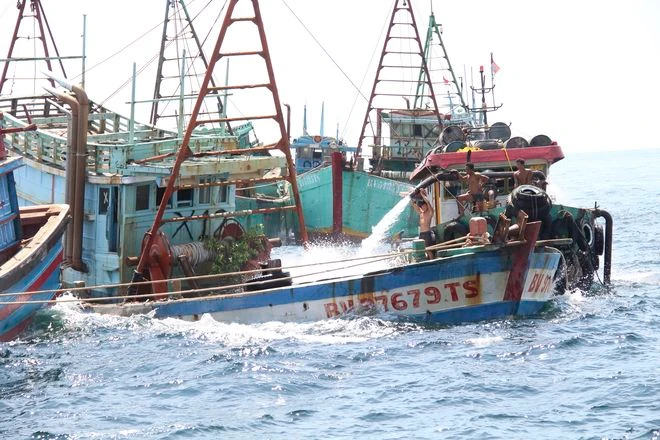State media reports Chinese fishing boat sinks in Indian Ocean; 39 on board missing
Beijing (AP) — A Chinese fishing boat operating in the Indian Ocean has sunk and all 39 crew members on board are missing, state media reported.
Broadcaster CCTV said the sinking happened around 3 a.m. Tuesday. The crew includes 17 from China, 17 from Indonesia and five from the Philippines, the report said.
Chinese leader Xi Jinping and Prime Minister Li Qiang have ordered Chinese diplomats abroad, as well as the agriculture and transportation ministries, to assist in the search for survivors.
The Chinese reports did not identify the exact location of the sinking, just that it occurred in the center of the vast Indian Ocean that stretches from South Asia and the Arabian Peninsula to east Africa and western Australia.
The Philippine Coast Guard Command Center said Wednesday it was monitoring the situation and coordinating with the Chinese Embassy in Manila, as well as search and rescue teams operating near the vessel’s last known location.
The Lupenglaiyuanyu No. 8 was based in the eastern coastal province of Shandong, operated by the Penglaiyingyu Co. Ltd., according to the Chinese reports. It was also identified by the hull numbers 18 and 028.
China is believed to operate the world’s largest fishing fleet. Many of them stay at sea for months or even years at a time, supported by Chinese state maritime security agencies and a sprawling network of support vessels.
No word was given on the cause of the sinking, although weather and high seas often play a role in such tragedies.
Recovery efforts are currently underway in Myanmar and Bangladesh after a powerful cyclone smashed into their coastlines along the Bay of Bengal at the Indian Ocean’s northern end, causing widespread destruction and at least 21 deaths, with hundreds of others believed missing.
Chinese squid fishing ships have been documented using wide nets to illegally catch already overfished tuna as part of a surge in unregulated activity in the Indian Ocean, according to a report released in 2021 by a Norway-based watchdog group that highlighted growing concerns about the lack of international cooperation to protect marine species on the high seas.
The group, called Trygg Mat Tracking, found that the number of squid vessels in the high seas of the Indian Ocean — where fishing of the species is not regulated — has increased six-fold since 2016.
The U.S. Coast Guard was also involved in a dangerous confrontation with Chinese vessels not far from Ecuador’s Galapagos Islands in 2022 during a mission to inspect the vessels for any signs of illegal, unreported or unregulated fishing.
Chinese fishing vessels operating illegally are known to sail “dark,” with their mandatory tracking device that gives a ship’s position either switched off, transmitting intermittently, or providing false identifiers. If that was the case in the latest sinking, rescue and recovery efforts could become far more challenging.
In 2014, Malaysia Airlines Flight 370 was believed to have gone down somewhere in the Indian Ocean with 239 people aboard. That Boeing 777, which remains missing, became invisible to civilian radar when its transponder locating device stopped transmitting during a flight from Kuala Lumpur.



